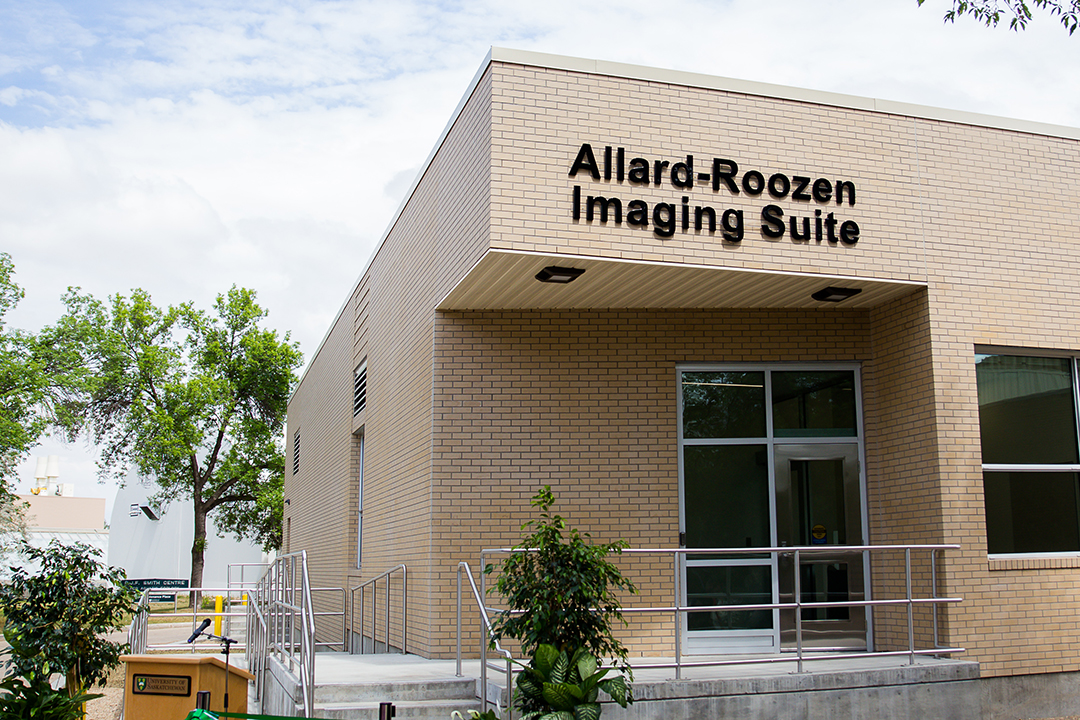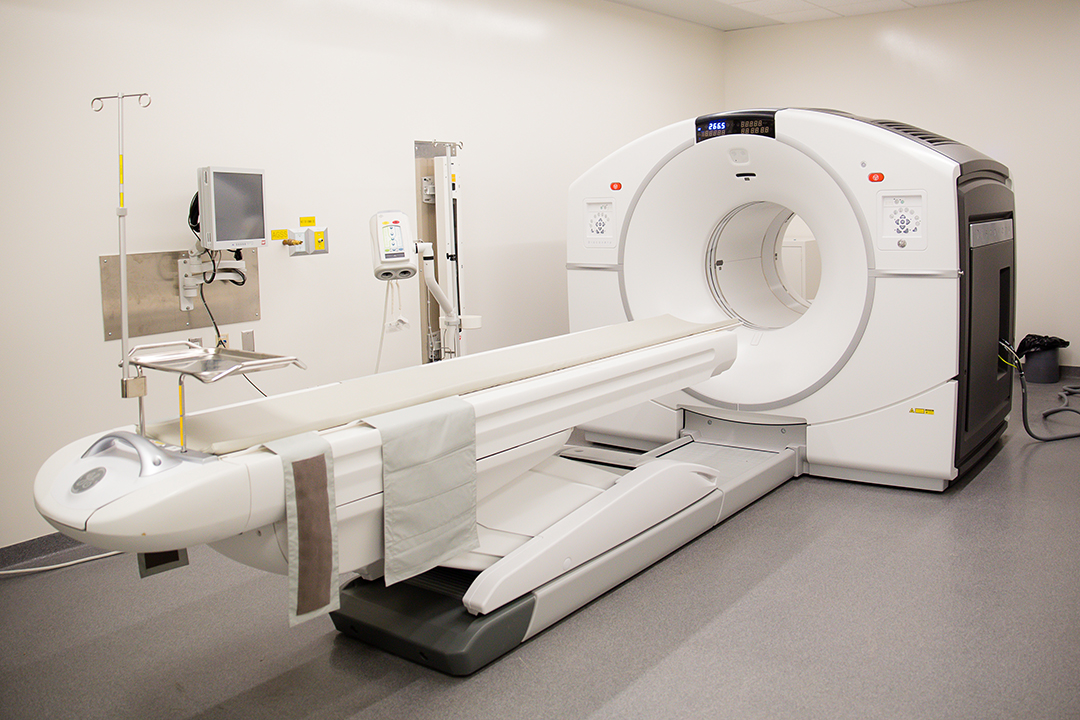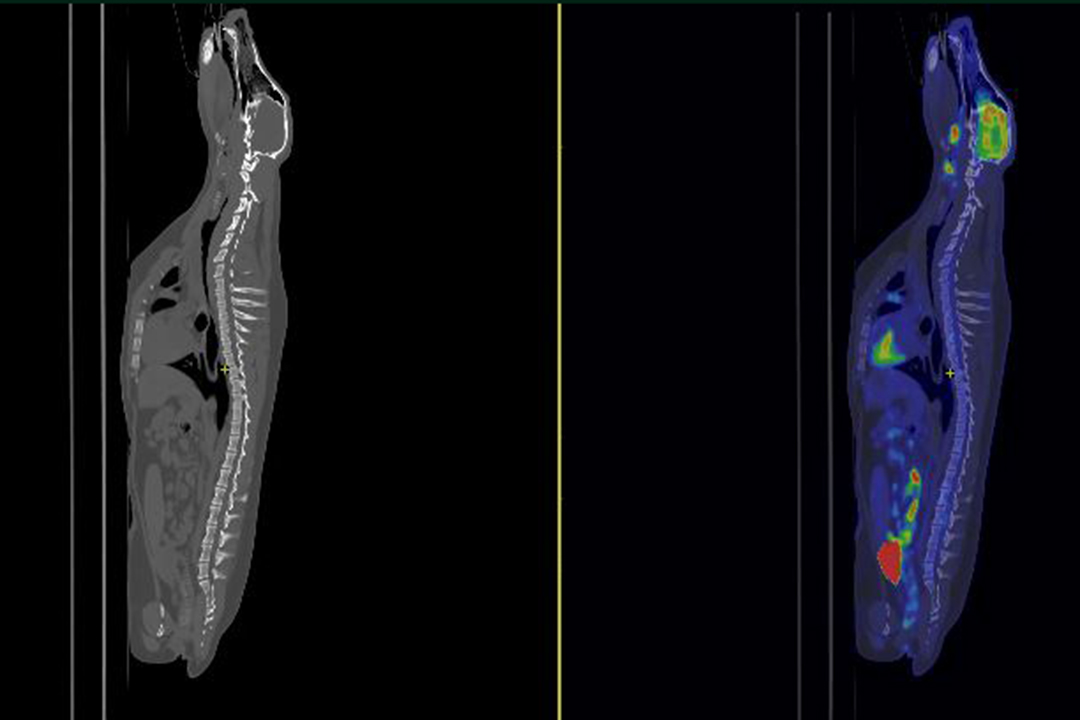
Allard-Roozen Imaging Suite (PET-CT)
Clinical positron emission tomography (PET) and diagnostic computed tomography (CT) available for applied research, translational studies and clinical veterinary medicine.
- Address
- 52 Campus Drive, University of Saskatoon, Saskatoon, SK S7N 5B4
About
The Allard-Roozen Imaging Suite is located on the west side of the Western College of Veterinary Medicine (WCVM). It's only a few steps away from the Saskatchewan Cyclotron Facility where the short-lived radionuclides are produced for PET imaging.
The WCVM is one of only five North American veterinary colleges with a positron emission tomography-computed tomography (PET-CT) unit available for clinical use in animals and for research studies.
The Allard-Roozen Imaging Suite also includes:
- a hot lab for manipulating and dispensing radiopharmaceuticals
- a kennel area approved for isolating radioactive animals
- workstations for image processing
- an uptake room for human studies
PET-CT technicians can:
- discuss the capabilities of the available equipment
- help you plan your protocols
- operate the PET-CT unit
- assist with safe handling of radiopharmaceuticals
Equipment
Fees for PET research
Fee schedule for members of USask community
|
$273 per hour or $579 per half day |
Package rates for VMC managed clinical cases and external users are available. Housing of research animals and assistance with anesthesia can be co-ordinated with the WCVM Animal Care Unit — subject to availability.
Research on human subjects requires further licensing and user co-ordinated medical oversight. Potential use of the PET-CT unit for human health research can be explored for specific projects.
Potential users should contact the radiation safety officer early in the planning phase to discuss capabilities and specific requirements for their projects.
Human research
The Canadian Nuclear Safety Commission (CNSC) has issued a licence to USask for human research studies using the PET-CT unit at the Allard Roozen Imaging Suite. As one of only two PET-CTs in Saskatchewan, the WCVM is excited to offer this unique research facility to USask faculty and their industry partners.
A CNSC licence to conduct human research studies is required for all situations where a nuclear substance is to be used on or in a human volunteer for a purpose that is not related to assessing, assuring or improving the volunteer’s personal medical health.
While the appropriateness of the Allard-Roozen Imaging Suite will need to be determined on a case-by-case basis, the USask licence is most appropriate for:
- basic clinical research studies, under Health Canada’s framework for "Positron-emitting Radiopharmaceuticals for Use in a Basic Clinical Research Study"
- Phase I clinical trials and some Phase II clinical trials
Based on the Health Canada process, a physician acting as the qualified investigator must be qualified under provincial law to provide the medical supervision encompassed by the activities of the licence for which the application is made.
A process is in place to review facility research use applications. For more information, please contact Matt Hutcheson (matt.hutcheson@usask.ca or 306-966-8494).



